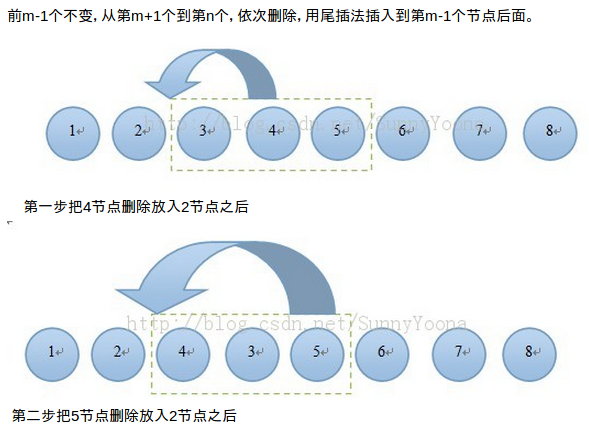Question
Given a binary tree, return the zigzag level order traversal of its nodes' values. (ie, from left to right, then right to left for the next level and alternate between).
For example:
Given binary tree {3,9,20,#,#,15,7},
3
/ \
9 20
/ \
15 7
return its zigzag level order traversal as:
[ [3], [20,9], [15,7] ]
Stats
| Frequency | 3 |
| Difficulty | 4 |
| Adjusted Difficulty | 2 |
| Time to use | -------- |
Ratings/Color = 1(white) 2(lime) 3(yellow) 4/5(red)
Analysis
This question is based on “Binary Tree Level Order Traversal”.
Altough this is difficulty level 4, the real difficult part is solving “Binary Tree Level Order Traversal”. If that question is solved, only slight modification is needed for this question.
Solution
Instead of using queue like in “Binary Tree Level Order Traversal”, this question is solved by using Stack. And it’s not hard to see why. The only additional things to note:
There is no ‘single stack solution’, we must use 2 stacks. (because when push, it’s pushed to top).
Keep a boolean variable to remember rightToLeft or leftToRight.
Code
First, standard BFS solution using 2 stacks.
public ArrayList<ArrayList<Integer>> zigzagLevelOrder(TreeNode root) {
ArrayList<ArrayList<Integer>> ans = new ArrayList<ArrayList<Integer>>();
if (root == null) return ans;
Stack<TreeNode> q = new Stack<TreeNode>();
q.push(root);
boolean reverse = true;
while (! q.isEmpty()) {
ans.add(new ArrayList<Integer>());
Stack<TreeNode> qq = new Stack<TreeNode>();
int curSize = q.size();
for (int i = 0; i < curSize; i ++) {
TreeNode node = q.pop();
ans.get(ans.size() - 1).add(node.val);
if (reverse) {
if (node.left != null) qq.push(node.left);
if (node.right != null) qq.push(node.right);
}
else {
if (node.right != null) qq.push(node.right);
if (node.left != null) qq.push(node.left);
}
}
q = qq;
reverse = ! reverse;
}
return ans;
}
Second, DFS solution written by me, and yes, I love DFS more.
public ArrayList<ArrayList<Integer>> zigzagLevelOrder(TreeNode root) {
ArrayList<ArrayList<Integer>> ans = new ArrayList<ArrayList<Integer>>();
helper(ans, root, 1);
return ans;
}
private void helper(ArrayList<ArrayList<Integer>> ans, TreeNode node, int level) {
if (node == null) return;
if (ans.size() < level) {
ArrayList<Integer> lv = new ArrayList<Integer>();
lv.add(node.val);
ans.add(lv);
}
else {
if (level % 2 == 0)
ans.get(level - 1).add(0, node.val);
else
ans.get(level - 1).add(node.val);
}
helper(ans, node.left, level + 1);
helper(ans, node.right, level + 1);
}
